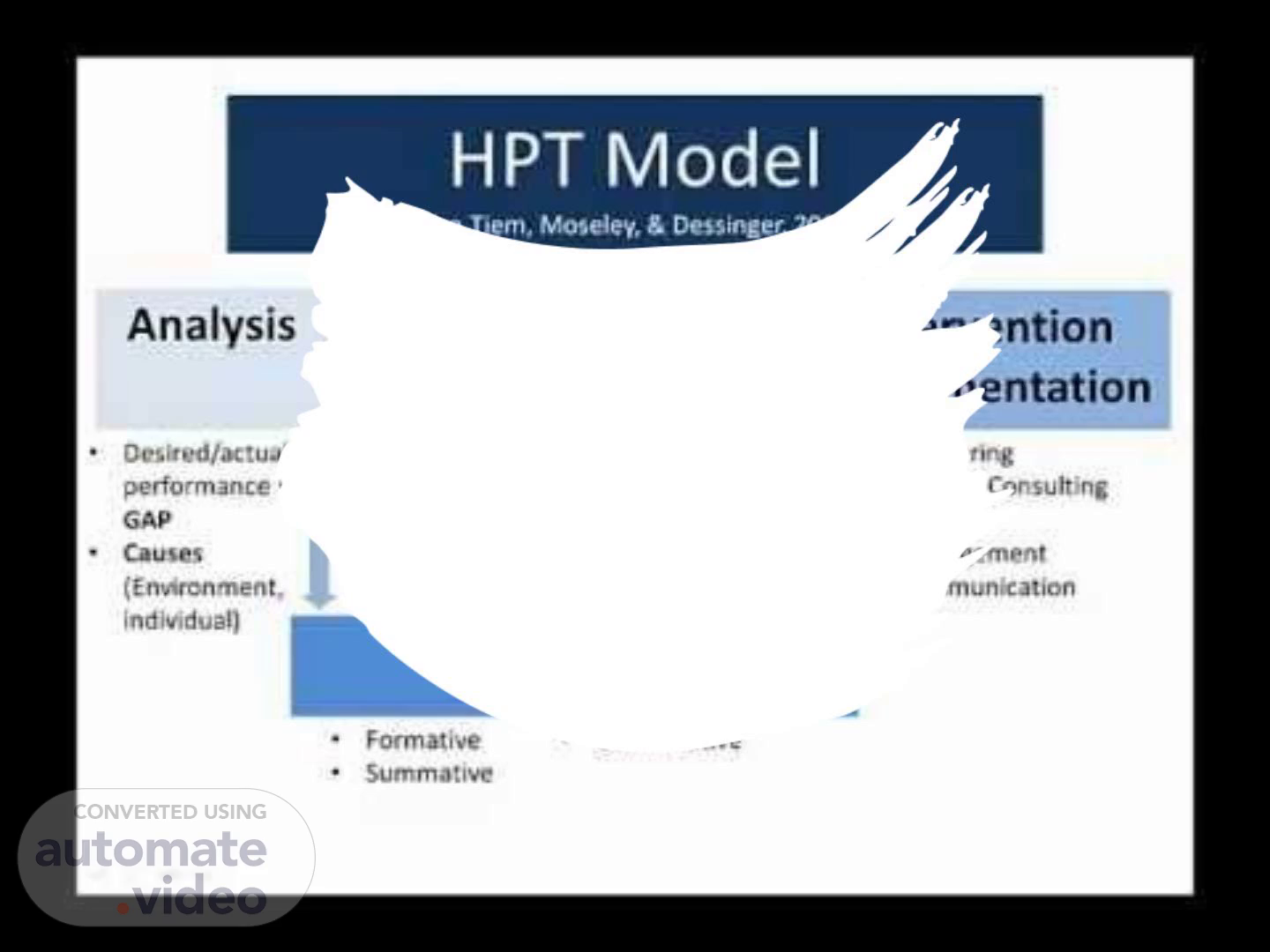Scene 1 (0s)
[Audio] This presentation introduces Human Performance Technology (HPT), explains the HPT model, and highlights why it matters in education and organizational contexts..
Scene 2 (26s)
[Audio] Human Performance Technology is a disciplined approach that focuses on outcomes rather than just activities. It looks holistically at performance gaps, searching for underlying causes. Unlike traditional approaches that often default to training, HPT emphasizes multiple solutions, including environmental, process, and organizational interventions..
Scene 3 (49s)
[Audio] The HPT model, often described as similar to the ADDIE model, includes Analysis, Design, Development, Implementation, and Evaluation. The process is iterative and cyclical, meaning evaluation can lead back to analysis for continuous improvement..
Scene 4 (1m 9s)
[Audio] In the Analysis phase, practitioners determine the gap between current and desired performance. They conduct root cause analysis, asking whether issues stem from the environment, organizational systems, or individual capability. This step ensures solutions address real causes rather than symptoms..
Scene 5 (1m 29s)
[Audio] During Design, practitioners decide what type of intervention is needed to close the gap. For example, if signage is unclear in a school traffic flow problem, better signage and process design may be the right solution, not training. HPT stresses aligning interventions with identified causes..
Scene 6 (1m 50s)
[Audio] Development is where the planned solutions are built. This could involve creating job aids, building new processes, or developing systems. Importantly, stakeholders should be included in this step to make sure the solution fits the real-world context..
Scene 7 (2m 6s)
[Audio] Implementation puts the designed and developed interventions into action. While training can be part of implementation, HPT cautions against training as a default solution. Instead, interventions are rolled out in the setting where the performance gap occurs..
Scene 8 (2m 23s)
[Audio] Evaluation measures whether the intervention solved the problem. It includes both formative evaluation, which occurs during development and implementation, and summative evaluation, which happens after interventions are complete. Results are used to calculate ROI and refine future HPT cycles..
Scene 9 (2m 46s)
[Audio] HPT has significant implications for education. It helps schools improve operational processes, such as traffic flow, scheduling, and mentoring. It also ensures that changes support equity and sustainability while keeping student outcomes and institutional goals aligned..
Scene 10 (3m 4s)
Home. HPT in the United States Special Operations Command (USSOCOM).
Scene 11 (3m 22s)
HPT in the United States Special Operations Command (USSOCOM).
Scene 12 (3m 35s)
HPT in the United States Special Operations Command (USSOCOM).
Scene 13 (3m 52s)
[Audio] This slide lists the references used in this presentation, following APA guidelines. In your narration, you should mention author names when citing information from these works..
